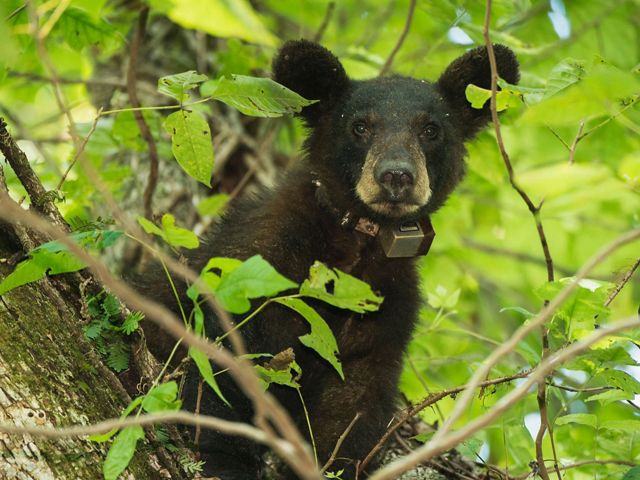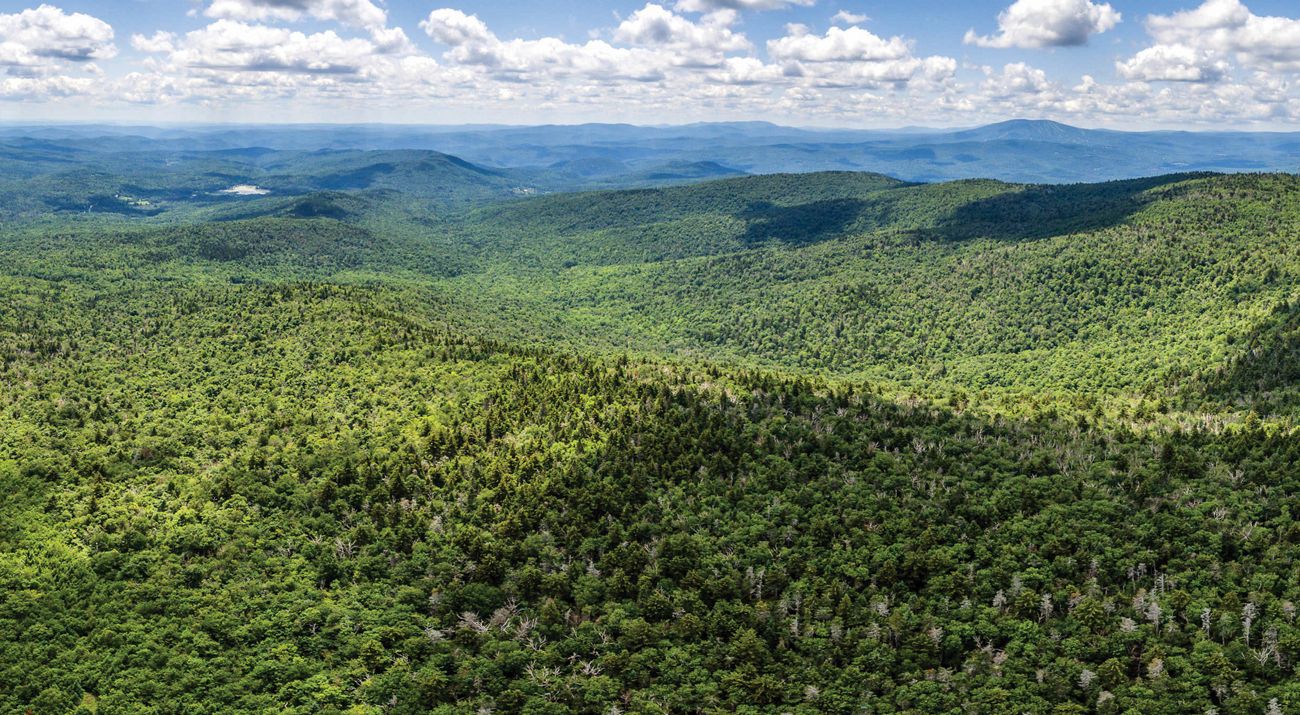Glebe Mountain
Protecting 3,560 acres protects wildlife in the face of climate change.

Each decade, species are shifting their ranges 11 miles north and 30 feet in elevation in response to climate change. How do we give species the best chance to rearrange themselves in the face of this seismic shift? The answer it seems, lies in protecting what is beneath our feet.
Geologic settings, such as limestone, slate, or granite, drive patterns of biodiversity and are considered “nature’s stage” by Dr. Mark Anderson, The Nature Conservancy’s regional science director. He advises conservation groups to protect different geologic settings—the “stage”—because with climate change the species—“the actors”—will shift over time, but the stage will endure and support the next cast of characters. “This strategy challenges us to create arenas for evolution, not museums of the past,” said Anderson.
Here in Vermont, for example, our abundance of calcium-rich soils allows us to host upwards of 1,000 more species than our New Hampshire neighbors—proving what we already know, Vermont indeed, is special. Therefore, a 3,560-acre parcel of forest in Southern Vermont, is in critical need of protection.
The Glebe parcel, spanning the towns of Londonderry and Windham, encompasses an array of geologic settings that will support a diverse richness of wildlife and plant species. The reality is that there are not many remaining opportunities in Vermont to protect large, forested blocks—making these projects only more urgent. The protection of Glebe does come at a cost, $4 million in the case of Glebe Mountain, yet the benefits are priceless.
Quote: Mark Anderson

“This strategy challenges us to create arenas for evolution, not museums of the past."
Glebe is For the Birds, Bears, and People
Glebe Mountain’s geology yields forests that literally and figuratively nourish wildlife. One of the most significant beech stands in southern Vermont is found on the parcel. Beechnuts are the star of the black bear’s diet, on which they ravenously gorge prior to hibernation. And the intact forests will allow this wide-ranging species to move as needed for mating and food while also providing essential habitat for New England forest birds, such as the hermit thrush, scarlet tanager and black-throated blue warbler. The successful conservation of this parcel will also safeguard the upper Cobb Brook watershed, protecting brook trout habitat and water quality that will be enhanced as we work to remove culverts that block fish passage.
The public will once again be able to roam the property’s hills on a summer hike or winter snowshoe, fish its streams and hunt for deer in the fall. Clean water will flow through Cobb Brook and over Hamilton Falls, a local treasure just down-stream from Glebe Mountain. The ridgeline will be protected from development and the forested landscape will capture carbon and allow species to move as they adapt to climate change. Let’s send a message to future generations telling them we care about forests, water and warblers.
All Hands On Earth
Imagine if we had not acted 30 years ago to help create Jamaica State Park or Green River Reservoir? How would future generations reflect on these lost opportunities? We need your help to seize this monumental opportunity.
“We often construct conservation areas parcel by parcel, 40 or 100 acres at a time, over a span of decades. It is a special moment when a project like Glebe Mountain surfaces—a chance to secure an expansive landscape in perpetuity. But we need all ‘hands-on-earth’ to get a project of this scale to the finish line,” said Jon Binhammer, Director of Land Protection. This is our chance to create a lasting legacy for Vermont and its people. Will you help us?
For more information on how you can help Glebe Mountain become a conservation success, please contact Catherine Newman, Director of Philanthropy, via email or 802-229-4425 extension 120.
